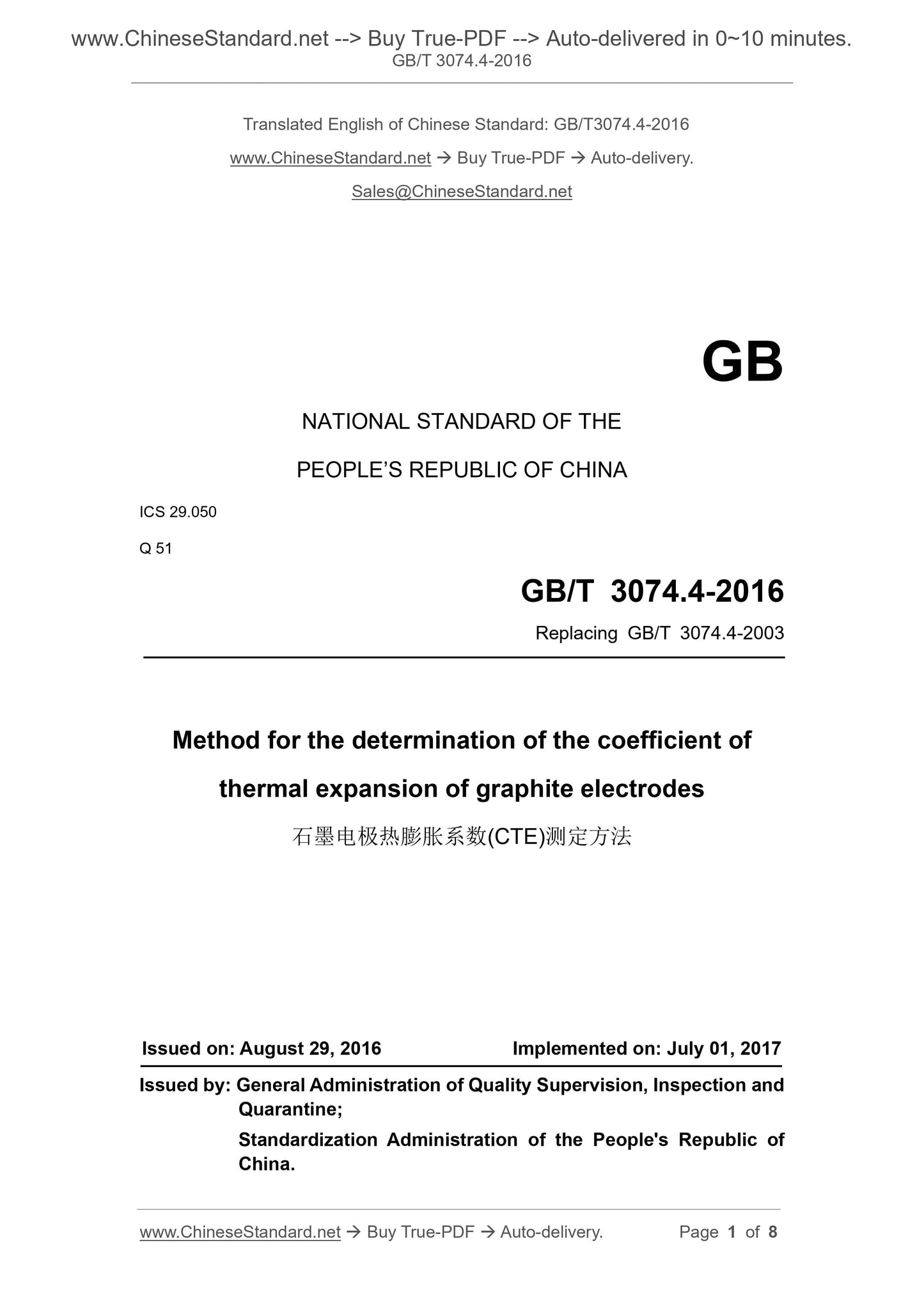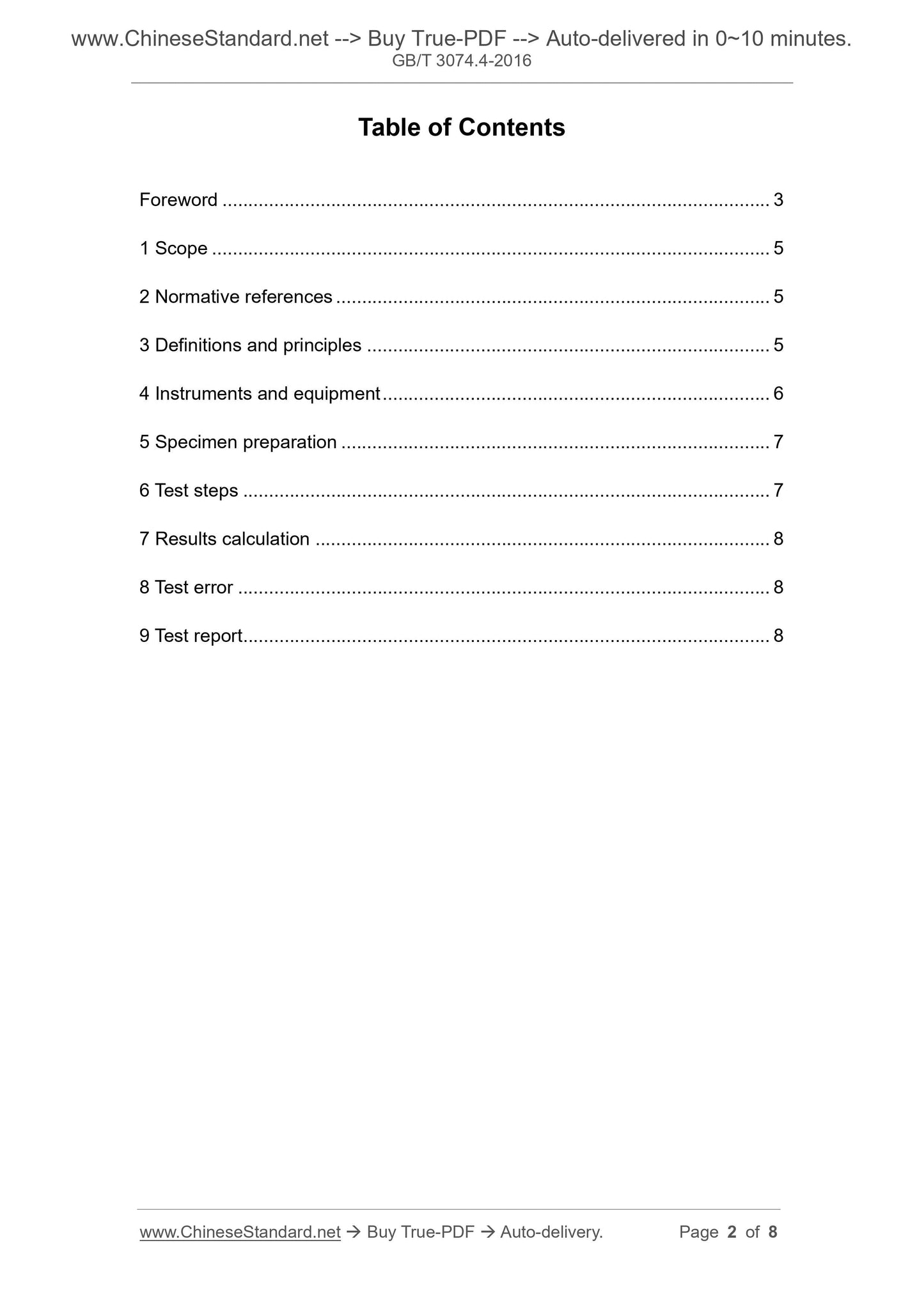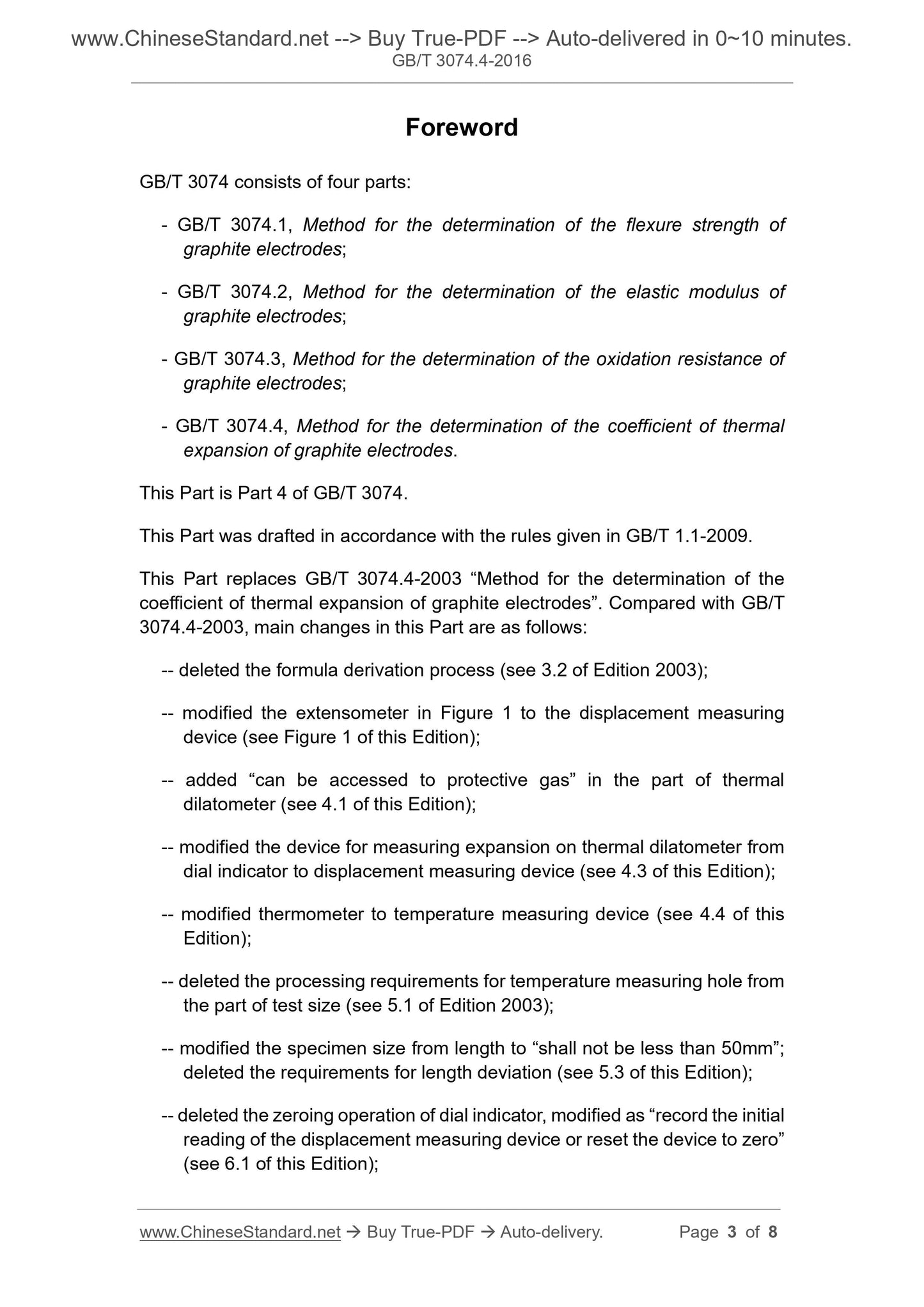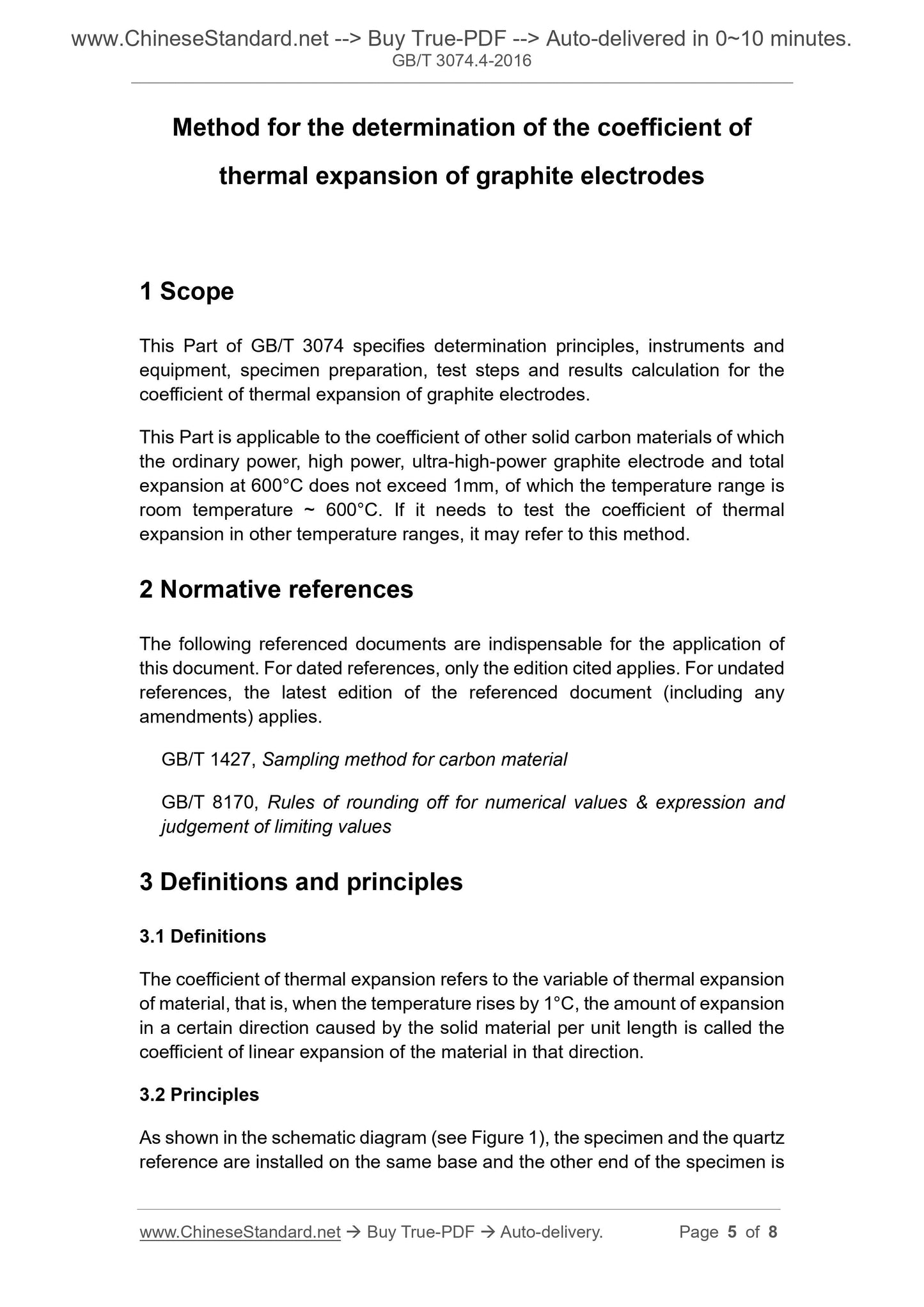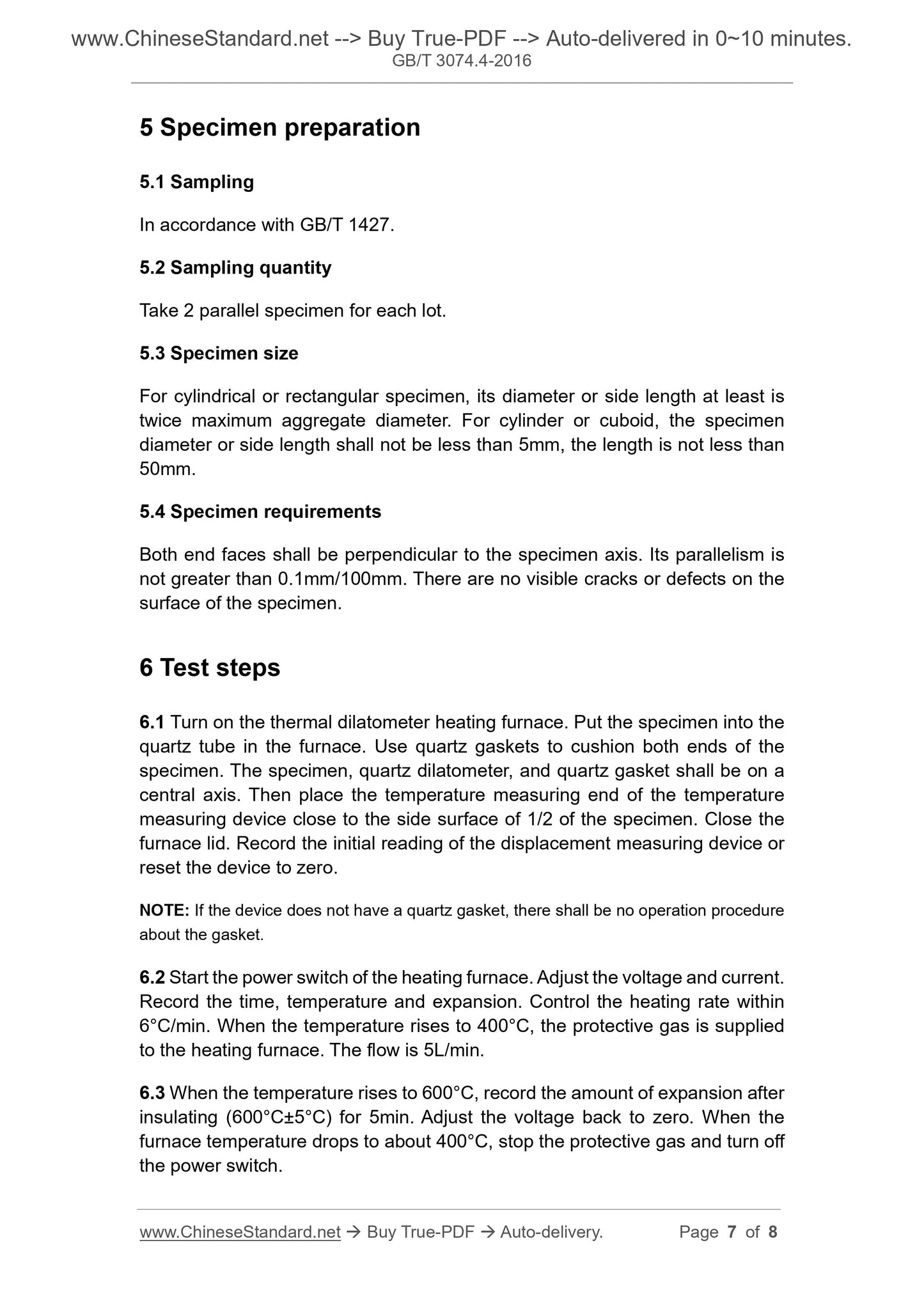1
/
of
5
www.ChineseStandard.us -- Field Test Asia Pte. Ltd.
GB/T 3074.4-2016 English PDF (GB/T3074.4-2016)
GB/T 3074.4-2016 English PDF (GB/T3074.4-2016)
Regular price
$110.00
Regular price
Sale price
$110.00
Unit price
/
per
Shipping calculated at checkout.
Couldn't load pickup availability
GB/T 3074.4-2016: Method for the determination of the coefficient of thermal expansion of graphite electrodes
Delivery: 9 seconds. Download (and Email) true-PDF + Invoice.Get Quotation: Click GB/T 3074.4-2016 (Self-service in 1-minute)
Newer / historical versions: GB/T 3074.4-2016
Preview True-PDF
Scope
This Part of GB/T 3074 specifies determination principles, instruments andequipment, specimen preparation, test steps and results calculation for the
coefficient of thermal expansion of graphite electrodes.
This Part is applicable to the coefficient of other solid carbon materials of which
the ordinary power, high power, ultra-high-power graphite electrode and total
expansion at 600°C does not exceed 1mm, of which the temperature range is
room temperature ~ 600°C. If it needs to test the coefficient of thermal
expansion in other temperature ranges, it may refer to this method.
Basic Data
| Standard ID | GB/T 3074.4-2016 (GB/T3074.4-2016) |
| Description (Translated English) | Method for the determination of the coefficient of thermal expansion of graphite electrodes |
| Sector / Industry | National Standard (Recommended) |
| Classification of Chinese Standard | Q51 |
| Classification of International Standard | 29.050 |
| Word Count Estimation | 7,796 |
| Date of Issue | 1982-05-10 |
| Date of Implementation | 2017-07-01 |
| Older Standard (superseded by this standard) | GB/T 3074.4-2003 |
| Regulation (derived from) | National Standard Announcement 2016 No.14 |
| Issuing agency(ies) | General Administration of Quality Supervision, Inspection and Quarantine of the People's Republic of China, Standardization Administration of the People's Republic of China |
Share
